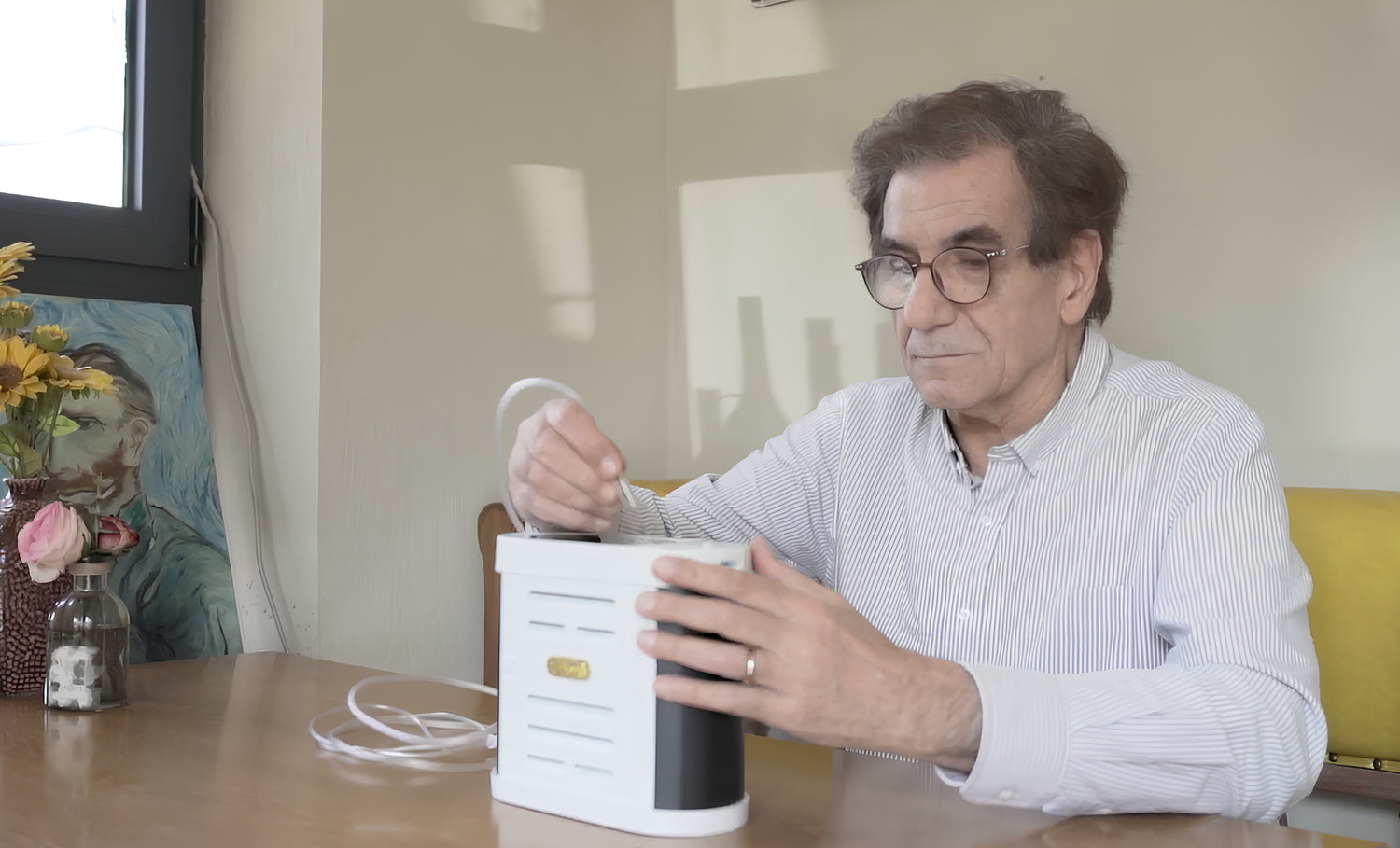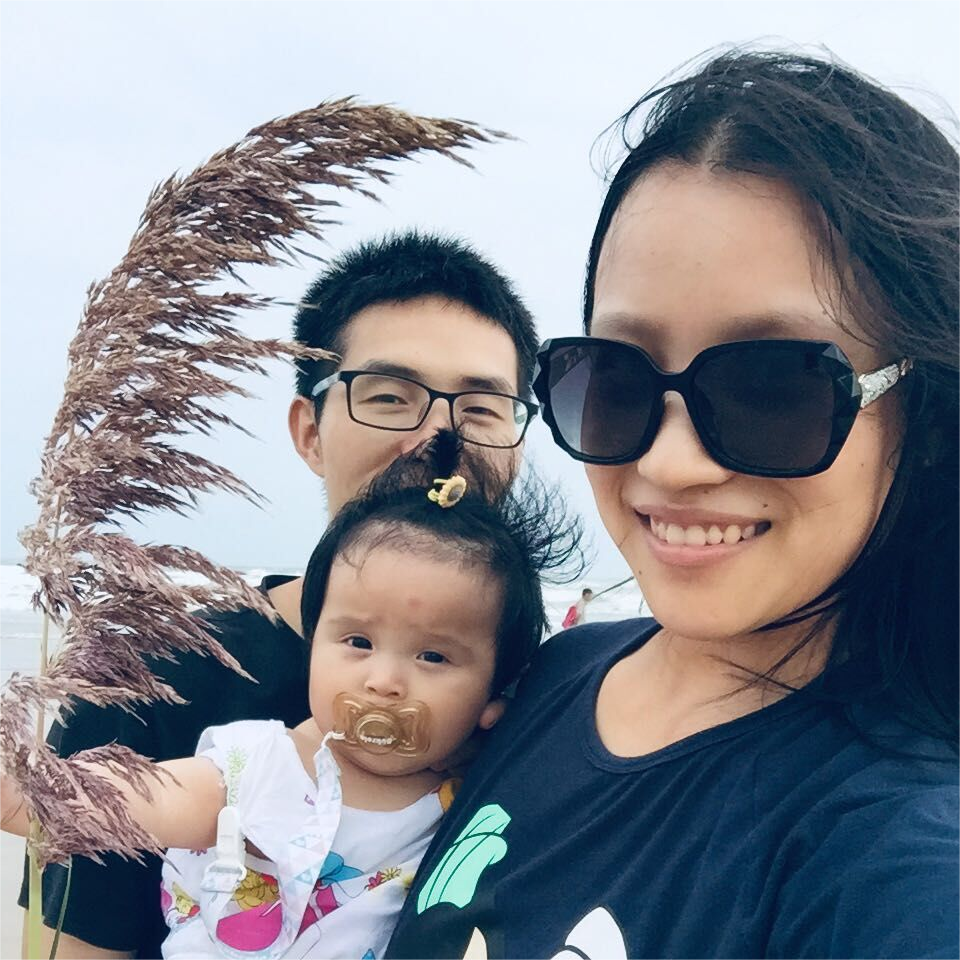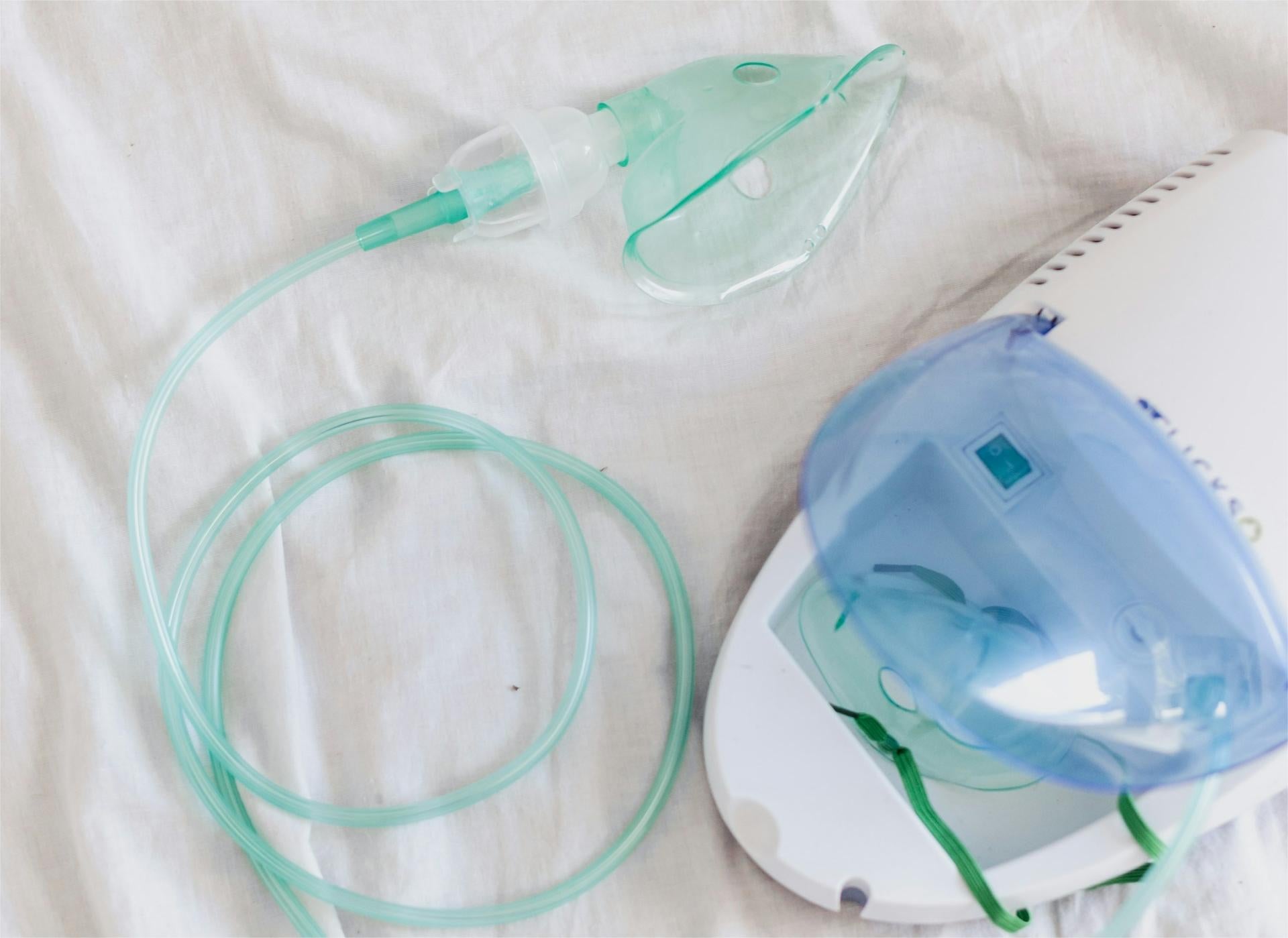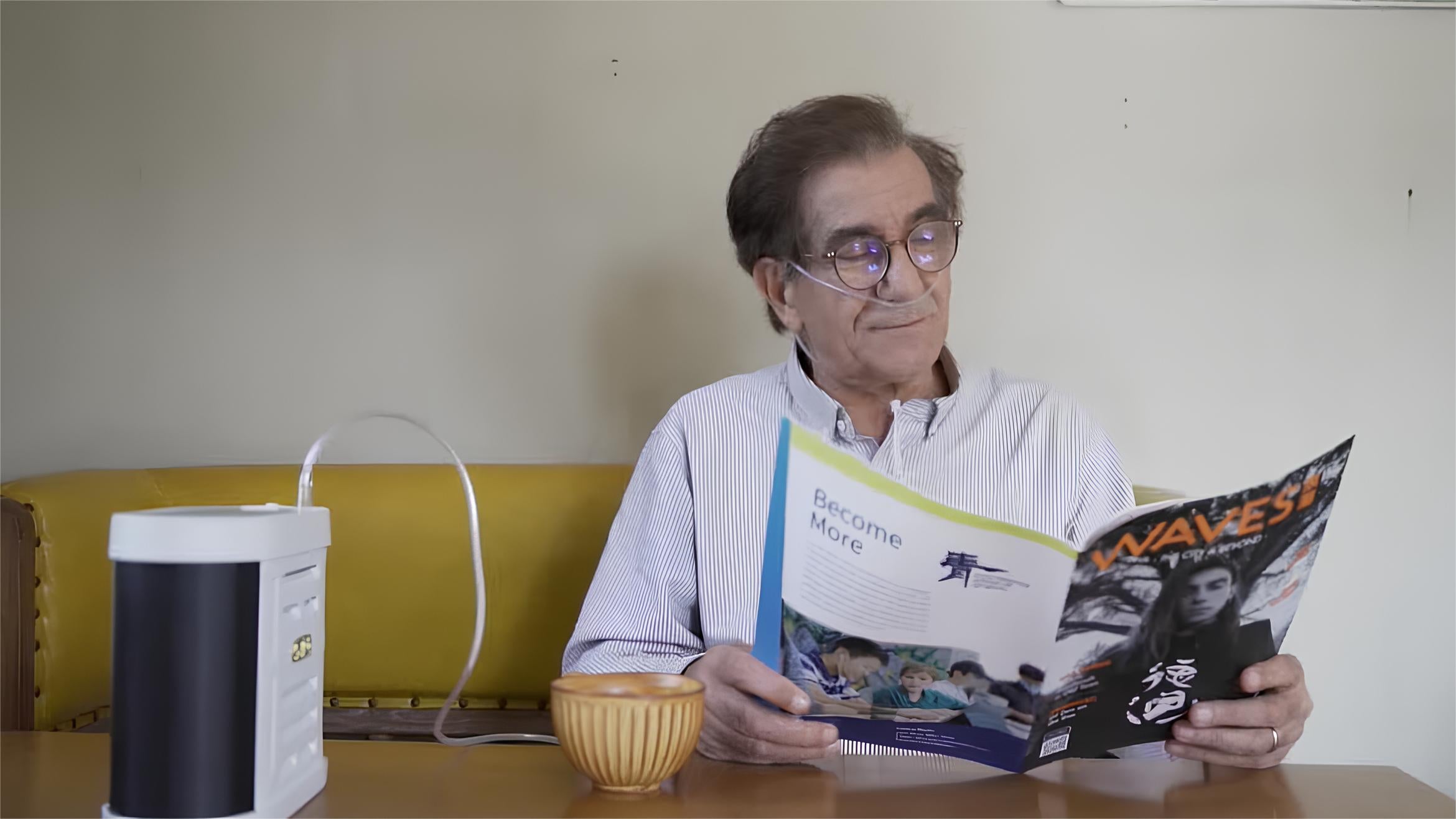Introduction
If you need extra oxygen, today's portable oxygen concentrators are a real game-changer, helping you keep up with the demands of everyday life. The year 2024 has brought us more POC options than ever, and figuring out which one to choose can be tricky. This guide is here to clear things up, leading you to a POC that fits just right-no matter if you're at home, heading out for groceries, or off on a holiday. With the right device, you'll find you can go about your day or enjoy your travels while managing your respiratory condition with less hassle.
Understanding Portable Oxygen Concentrators
A portable oxygen concentrator is a compact machine that helps people who need extra oxygen to breathe better. It's light and easy to carry around, unlike the big, heavy tanks people used before. These concentrators take in air from the room, separate out the oxygen, and then provide it to you through a small tube that fits in your nostrils or a mask over your nose and mouth. You won't need to worry about filling it up or getting new tanks; it just keeps giving you oxygen as long as it has power.
Here's a bit more detail on how they operate:
- Air Intake: The concentrator draws in room air through a filter.
- Nitrogen Removal: Inside the machine, air passes through a material called a molecular sieve. This substance absorbs nitrogen, leaving mostly oxygen.
- Oxygen Delivery: The nearly pure oxygen then flows through tubes and into your lungs, providing the boost you need.
- Exhaust: The leftover nitrogen is released back into the atmosphere.
Now, why would someone choose a POC over traditional oxygen tanks? Here are some advantages:
- Mobility: POCs are much lighter and often come with carrying cases or wheels.
- Convenience: No need for refills-you can produce oxygen anywhere there's power.
- Travel-Friendly: Many models are approved for use on airplanes and other forms of public transportation.
- Cost-Effective: Over time, the cost of using a POC can be lower since there's no need for continuous tank deliveries.
In 2024, these devices have become even more user-friendly, efficient, and reliable, thanks to technological advancements. With various options available, from size and battery life to flow settings, there's a POC out there that can cater to just about anyone's needs and lifestyle.
Understanding the basics of portable oxygen concentrators is the first step toward finding the right one for you or your loved one. In the next section, we'll delve deeper into the significance of oxygen therapy today and how it's being improved upon with modern technology.

The Significance of Oxygen Therapy in 2024
Oxygen therapy is essential for many people with lung diseases like COPD, pulmonary fibrosis, and severe asthma. It's more than just treatment-it can actually help patients lead better lives by improving their ability to exercise, helping them live longer, and making day-to-day activities easier.
As of 2024, oxygen therapy remains crucial and has seen some key improvements:
- Efficiency: Today's portable oxygen concentrators (POCs) are better at giving you the right amount of oxygen, even though they're smaller.
- Adjustable Settings: They now have more settings to give you the exact amount of oxygen you need, whether you're resting or on the move.
- Smart Monitoring: Many POCs now come with smart tech that keeps track of how much oxygen you're using, your oxygen levels, and how often you breathe.
- Longer Battery Life: New battery advancements mean your POC keeps going longer on a single charge, letting you move around more freely without worrying about power.
These tech upgrades aren't just for better treatment; they make oxygen therapy a part of your life without getting in the way, allowing for a more active lifestyle.
If you're thinking about getting a POC for yourself or someone close to you, these recent changes mean that using one can be as smooth and hassle-free as possible.

Key Considerations Before Purchasing a POC
Choosing a portable oxygen concentrator is a bit like picking out a new smartphone. You want something that fits your lifestyle, meets your needs, and is within your budget. But when it comes to POCs, there's a bit more at stake – it's about health and mobility. Let's break down the essential factors you should think about before making this important purchase.
- Determining Your Oxygen Needs: The choice between continuous flow and pulse dose delivery is crucial. Continuous flow POCs deliver a steady stream of oxygen, which can be necessary for those with high oxygen requirements, especially at night. Pulse dose models emit oxygen only when you inhale and are generally lighter and more energy-efficient – good for daytime use and people with lower oxygen needs.
- Battery Life and Power Options: Look for a POC with a battery life that aligns with your daily routine. If you're often out and about, longer battery life is key. Also, check the availability of car chargers or external batteries. Some models offer replaceable batteries, allowing you to carry spares.
- Weight and Portability: One of the most significant advantages of a POC is portability. Check the weight of the device and consider how you'll carry it – some come with shoulder straps or backpack options, and others have carts.
- Noise Level Considerations: While modern POCs are quieter than ever, they still make noise. If you're sensitive to sound or need a quiet environment, look for models known for their low decibel levels.
- Ease of Use and Maintenance: A user-friendly interface and simple maintenance procedures will make your life easier. Large buttons, clear displays, and simple cleaning instructions are worth looking for.
- FAA Approval for Travel: If you love to travel, ensure your chosen POC is FAA-approved. Most manufacturers provide this information but always verify it before booking a flight.
Considering these factors helps narrow down the search and ensures you choose a portable oxygen concentrator that not only meets your medical needs but also fits into your life beautifully. In our next section, we will delve deeper into the features that set apart the best portable oxygen concentrators in 2024, helping you stay ahead of the curve.
Financial Aspects of Owning a POC
Investing in your health often comes with a price tag, and portable oxygen concentrators are no exception. However, understanding the financial aspects of owning a POC can ease the burden and help you make a cost-effective decision. Here's what you need to know about the costs and financial support available for a POC in 2024.
- Cost Range: The price of portable oxygen concentrators can vary widely based on their features, battery life, and brand reputation. In 2024, you might find basic models starting at around $1,500, with high-end units going up to $3,500 or more. While the upfront cost can be significant, remember that a POC is a long-term investment in your quality of life.
- Insurance Considerations:It's crucial to check with your health insurance provider to determine what portion of the cost they will cover. Many insurance plans, including private insurers, may partially or fully reimburse you for a POC if deemed medically necessary by your doctor.
- Medicare: If you're a Medicare beneficiary, Part B may cover the rental or purchase of a POC if your healthcare provider prescribes it for home use and you meet specific conditions. Keep in mind that even with Medicare, you may be responsible for paying part of the cost, typically 20% of the Medicare-approved amount.
- Financing and Payment Plans: Some suppliers offer financing options or payment plans to make the cost more manageable. These can spread out over several months or years, but interest rates and finance charges can add up, so it's important to read the fine print and ensure you understand the total amount you'll be paying over time.
Understanding the costs of a portable oxygen concentrator means you'll need to do some homework and think things through. It's important to talk to different people like your insurance company, your doctor, and stores that sell medical equipment to fully understand how much you might need to pay.
Legal and Health Compliance in 2024
When it's time to choose a portable oxygen concentrator, staying informed about legal and health compliance is as important as comparing features or prices. In 2024, regulations surrounding medical devices, including POCs, continue to ensure patient safety and product reliability. Let's navigate through the key aspects of compliance that you should be aware of.
- FDA Regulations and Compliance: In the United States, the Food and Drug Administration (FDA) regulates medical devices such as portable oxygen concentrators. FDA clearance or approval means that the device has been tested for safety and efficacy. Always verify that the POC you're considering is FDA-approved to ensure it meets strict health and safety standards.
- Prescription Requirements: POCs are classified as Class II medical devices, which means they require a prescription from a licensed healthcare provider. This prescription not only allows you to purchase a POC but also outlines your specific oxygen needs, ensuring you receive the right type and amount of oxygen therapy.
- Medical Supervision: Regular check-ups with your healthcare provider are essential when using a POC. They can help monitor your oxygen levels, adjust your prescription if necessary, and ensure that the POC is effectively supporting your health.
- International Standards: If you're traveling abroad, it's crucial to be aware that different countries may have their regulations regarding medical devices. Before travel, check the international standards and compliance requirements for the destination country to avoid any legal complications with your POC.
- Insurance Coverage Compliance: For insurance or Medicare to cover your POC, you'll need to comply with their specific rules and documentation requirements. This often includes proof of a qualifying condition, a doctor's prescription, and evidence that other therapies have been tried and were not effective.
Staying compliant not only keeps you within the law but also ensures that you receive high-quality, safe, and effective oxygen therapy. With all these legal considerations addressed, you can use your POC with confidence, knowing that you're aligned with the latest health standards.

Practical Tips for First-Time POC Buyers
Stepping into the world of portable oxygen concentrators as a first-time buyer can feel like a big leap. To make this transition smooth and ensure you choose a device that enhances your lifestyle, here are some practical tips to keep in mind before making that all-important purchase.
- Understand Your Oxygen Needs: Before you start looking at devices, have a clear understanding of your oxygen requirements. This is something you should determine with your healthcare provider, based on your medical condition, lifestyle, and typical daily activities.
- Research and Compare Models: Spend time researching different models online, reading user reviews, and comparing features. Look for video tutorials or demonstrations manufacturers provide these to help you get a better sense of how the devices work.
- Check for Trials or Return Policies: Some suppliers may offer trial periods or have return policies if the device doesn't meet your expectations. This can be particularly helpful when you're trying to find the best fit for your needs.
- Plan for Extras: Consider the cost of additional batteries, chargers, accessories, and replacement parts. These items can add up, so factor them into your budget.
- Think About Lifestyle Compatibility: Choose a POC that complements your lifestyle. If you enjoy traveling, ensure it's FAA-approved and easy to transport. If you're active, look for a durable device with a long battery life.
- Consult with Support Groups: Speaking with others who use POCs can provide valuable insights. Support groups, whether in person or online, can offer practical advice and personal experiences to guide your decision.
- Involve Your Caregivers: If you have caregivers or family members who assist you, involve them in the process. They will also be interacting with the POC and can offer perspectives on usability and convenience.
- Assess the Vendor: The vendor's reputation is just as important as the device itself. Choose a supplier known for excellent customer support and service, which will be vital for any questions or issues post-purchase.
- Insurance and Warranties: Ensure that you understand what is covered by your insurance and what the warranty on the device includes. Knowing what types of repairs and services are covered can save you unexpected costs down the line.
- Take your Time: Don't rush your decision. Take the time to consider all options and choose a POC that you feel confident will meet your needs both now and in the future.
By following these tips, you'll be well-equipped to find a portable oxygen concentrator that fits seamlessly into your life, giving you the freedom and flexibility you deserve. In our final section, we'll wrap up everything we've discussed and send you on your way to living more fully with your new POC.
Final Thoughts: Selecting Your Ideal Portable Oxygen Concentrator
Picking the right portable oxygen concentrator (POC) is all about matching one to your health needs and how you live your life. Look for one that's easy to use, fits your activity level, lasts long enough on a charge, and has the smart features you need. Make sure it's also affordable with your insurance or budget and follows all health laws. Listen to advice from others who use POCs and take your time making this choice because it's not just about buying a device; it's about giving yourself the ability to live more freely.





Laisser un commentaire
Ce site est protégé par hCaptcha, et la Politique de confidentialité et les Conditions de service de hCaptcha s’appliquent.